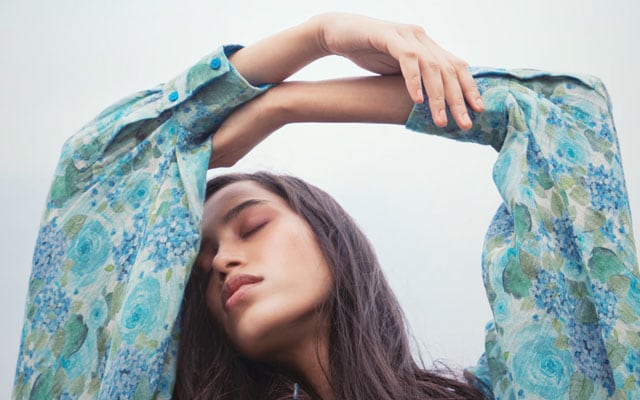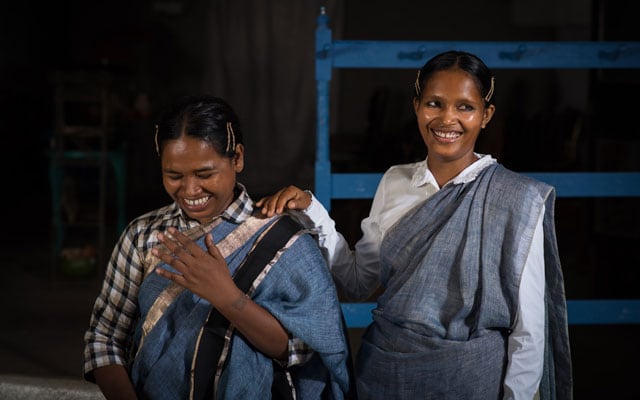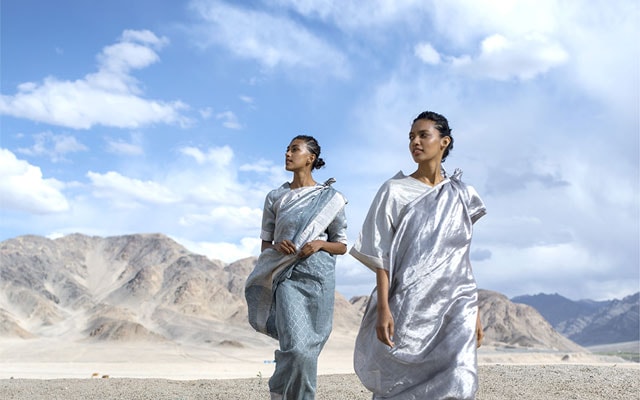Top Notch | Anavila Misra: 'Linen is not a native textile so using it on a sari meant giving the sari a global language'
Top Notch | Anavila Misra: 'Linen is not a native textile so using it on a sari meant giving the sari a global language'

HISTORY will remember Anavila Misra as the designer who brought handwoven linen saris into India’s fashion-scape. She launched her label ‘Anavila’ at a small exhibition at the tasteful Artisan’s Centre gallery in Mumbai’s chic Kala Ghoda area in 2011, and followed it up with several more shows. Now, every designer, every little sari emporium, every crafts bazaar sells out its linen saris.
“I was initially a menswear designer, with Louis Philippe and then Wills Lifestyle. But I thought women needed more comfort in their everyday wear. Nothing is more comfortable than linen, and using it on saris brings a fresh and modern perspective,” the 46-year-old tells me. “Linen is not a native Indian textile, so using it on a sari meant giving the sari a global language.”
It’s ironic when you learn that the sari is not native to Misra either. She grew up in Karnal, Haryana, where women wore shirts with salwars daily, and saved their saris for more festive or formal occasions. “Much of North India does not wear a sari, not Punjab, not Haryana, not Himachal,” she explains. “But I had worked a short stint for the government on a rural crafts project. I had travelled to West Bengal and the south of India, where I saw women wear saris as they went about their daily activities: working in the fields, or on the looms, or riding a bicycle or running to catch a bus.”

Misra may have started making saris with one weaver in West Bengal in 2010. By the time Misra took part in Lakme Fashion Week, in 2014, she was a sensation. Her linen saris were blockbusters, and have been personally owned by movie stars such as Deepika Padukone, Kangana Ranaut, Sonali Bendre, Vidya Balan, Sonam Kapoor, Konkona Sensharma and several others.
It was a rare thing because saris in urban settings were not as popular a decade ago as they are today. Saris were worn by mothers or grandmothers, and handloom saris were strictly for textile lovers. I think after Alia Bhatt’s wedding, where the actor wore an ivory custom Sabyasachi sari, I have barely seen anyone wear a lehenga. But Misra has always championed the sari as an everyday outfit.
“When I saw women in rural settings wear their saris so effortlessly, I realised how easy it was on the eye. It’s so feminine, and looks beautiful. I started collecting textiles then. I began to wear more saris and started enjoying them,” she says.

Misra found one masterweaver in Phulia, Shantipur, West Bengal, who agreed to weave linen for her. His name is Rakhal Sarkar, and he still works for Misra, managing an additional 200 weavers in the village for her. There has been a sea-change in Sarkar’s living circumstances. He has moved from a tin shed to a two-story house, and owns his own cars too.
“The most important thing for me is to work with natural fabrics, and to ensure we don’t disrupt the environment or create pollution. But we also need to be more mindful that we sustain employment with our clusters. They need to grow as we grow with the brand, they are an important part of it,” Misra explains.
Mindfulness lies at the core of all of Misra’s efforts. A few years ago she launched a collection of handmade Busa (‘little sister’ in Sanskrit) dolls. They were dressed in saris that were made from leftover fabrics. Misra says she made her first doll when her niece was born six years ago, and now has a collection of Busa and her animal friends that she retails from her stores as well as online. “It wasn’t a commercial plan. I just thought that we complain that young people don’t wear saris because they are not exposed to our culture, but we need to expose them to our culture first. India needed a sari-wearing doll. Young girls need to see more sais around them to get comfortable with the idea of wearing saris. Or else, like us, they will be struggling without knowing how to tuck and pleat one. We have done two workshops with little girls and it was surprising to see how much fun they had dressing up the dolls,” Misra smiles.

In the same vein, one of Misra’s newer collections is inspired from the Kaas Plateau in Maharashtra. “It’s similar to the Valley of Flowers in Uttarakhand. At a certain time of the year, the area is filled with flowers of different hues. So a satiny orchid has inspired a line in satin. The changing colours have inspired an ombre line, and there are a lot of blues that remind one of the beautiful skies there,” she says.
Misra launched the Anavila ecommerce site in 2019 and it kept her head well above the water through the pandemic. She says online sales form a big part of her business now since more than 80 percent of her shoppers are repeat customers. Misra also sees the company expand into home textiles soon.

“I definitely see the Anavila brand as a social enterprise. It’s more than a commercial transaction. We want to be more impact-driven and I see the brand growing in that direction,” she says.
Namrata Zakaria is a seasoned writer and editor, and a chronicler of social and cultural trends. Her first book, on late fashion designer Wendell Rodricks’ Moda Goa museum, is due to be published shortly. Zakaria is especially known for her insider’s take on fashion, luxury and social entrepreneurship in India. Her writing is appreciated for shaping opinions, busting myths, making reputations and sometimes breaking the odd career. Zakaria is also involved in putting together philanthropic efforts in the field of economic and environmental sustainability.
Read all the Latest News, Trending News, Cricket News, Bollywood News, India News and Entertainment News here. Follow us on Facebook, Twitter and Instagram.
What's Your Reaction?



























































